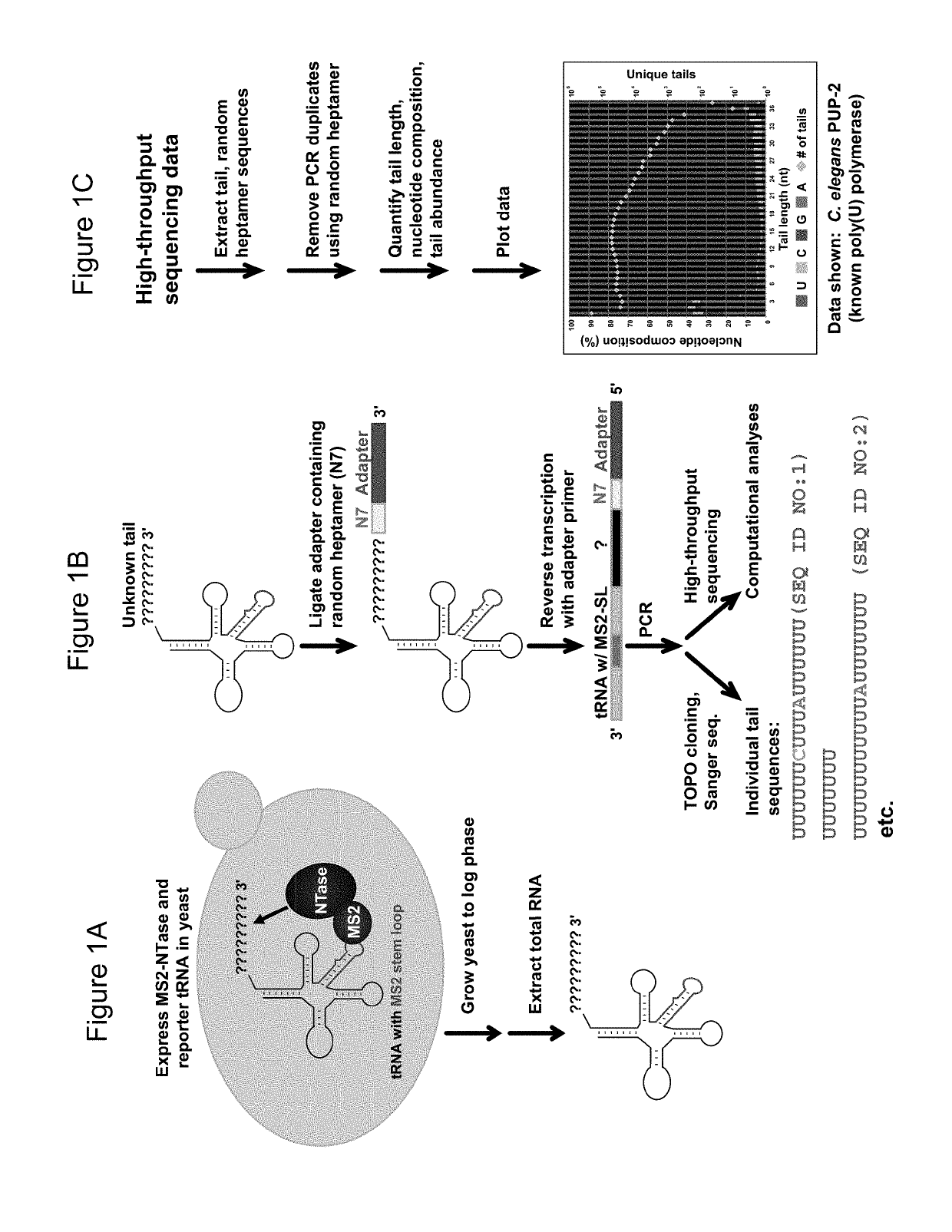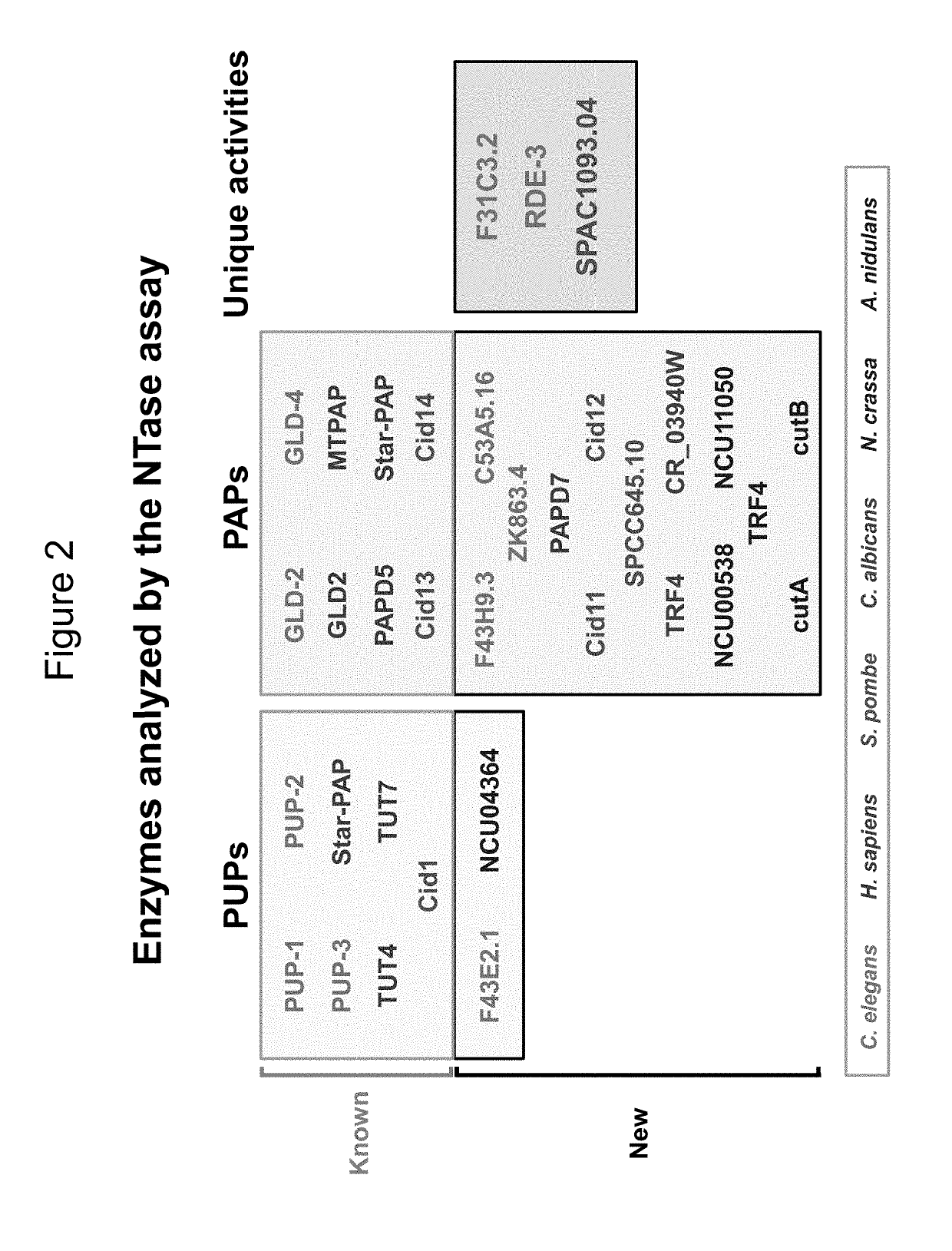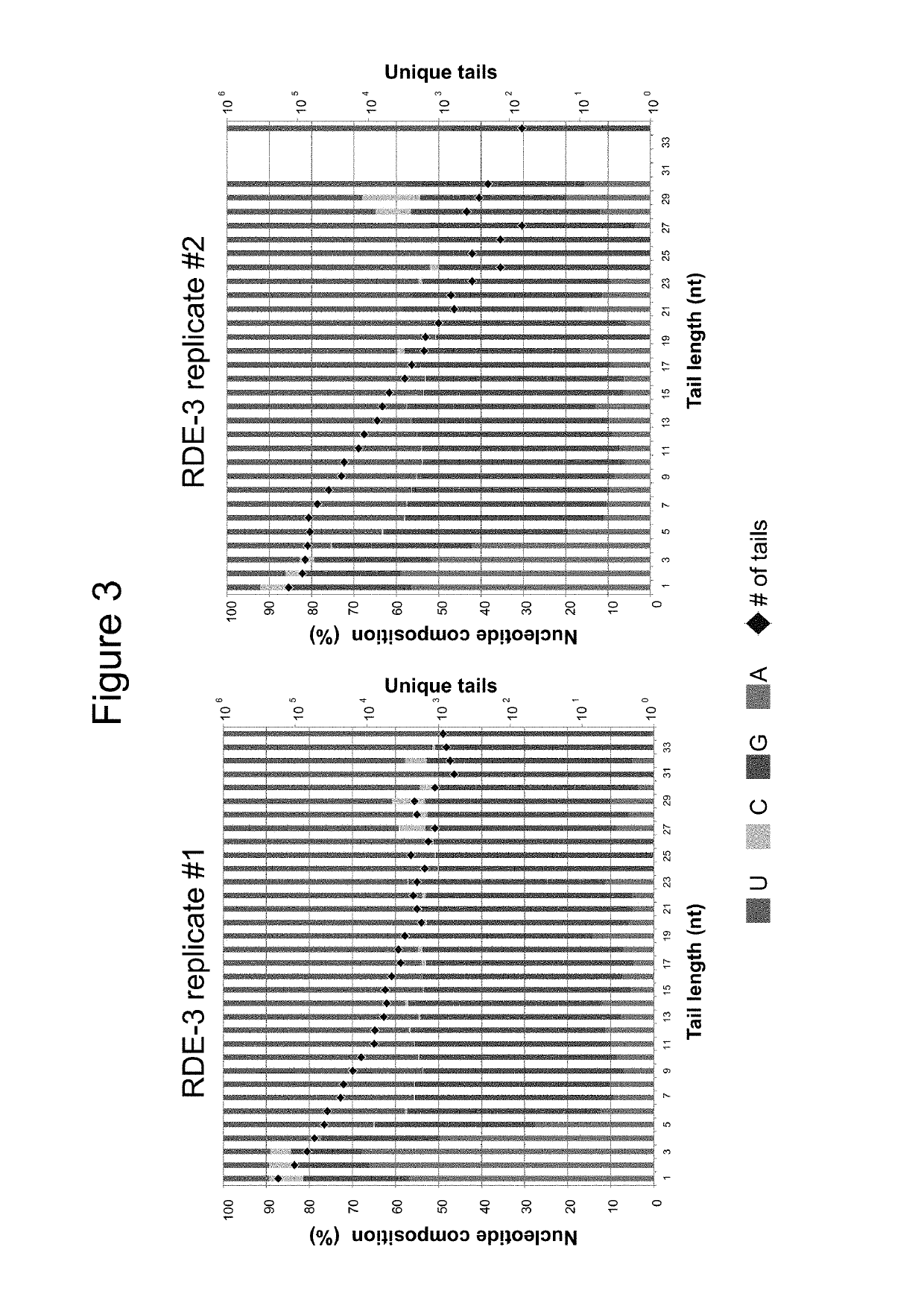Poly(UG) polymerase, constructs, and methods of making and using the same
a polymerase and polymerase technology, applied in the field of ribonucleotidyl transferase, can solve the problem of quite small number of known ntases
- Summary
- Abstract
- Description
- Claims
- Application Information
AI Technical Summary
Benefits of technology
Problems solved by technology
Method used
Image
Examples
example 1
Polymerase Activity of RDE-3
[0077]The yeast S. cerevisiae was used to develop a new system to detect the activity of previously uncharacterized ribonucleotidyl transferases (NTases) by tethering an MS2 fusion of the candidate enzyme to a novel reporter tRNA modified to contain an MS2 stem loop and then sequencing the added tails. The class II serine tRNA with an AGA anticodon was used as a base for the reporter tRNA. The variable stem loop of the tRNA was replaced with an MS2 stem loop, resulting in the following sequence of the mature tRNA: 5′ GGCAACUUGGCCGAGUGGUUAAGGCGAAAGAUUAGAAAUCUUUACAUGAGGAUCACCCAUG UGCAGGUUCGAGUCCUGCAGUUGUCG 3′ (SEQ ID NO:54). Class II tRNAs are ideal candidates to use as reporter tRNAs because their variable stem loop structure is similar to an MS2 stem loop. However, any tRNA could be used as a reporter, as long as the MS2 stem loop is placed in a region that does not affect the post-transcriptional processing of the tRNA.
[0078]BY4741 yeast strains expressi...
example 2
of RDE-3 to Alter Poly(UG) Polymerase Activity
[0081]FIG. 5 shows a schematic view of the RDE-3 protein sequence, including identification of the nucleotidyltransferase domain (“NTD”), the poly(A) polymerase-associated domain (“PAPd”), which includes a nucleotide recognition motif, the location of residues 113-221, and seven point mutations: five that were identified in Chen et al. (2005) and two modifying the first and second catalytic aspartic acid residues. The methods of Example 1 were repeated to express RDE-3 with the following mutations. FIG. 6 shows a comparison of the tailing activity of a D105A / D107A-modified RDE-3 (left) compared with wild type (right). FIG. 7 shows a comparison of the tailing activity of an RDE-3 mutant with an in-frame deletion of residues 113-211 (left) compared with wild type (right). FIG. 8 shows the tailing activity of a G93E-modified RDE-3 (left) and a D189N-modified RDE-3 (right). FIG. 9 shows the tailing activity of an RDE-3 with an in-frame delet...
example 3
Polymerase Activity of RDE-3 on Alternative RNA
[0082]The method of Example 1 was repeated by substituting an RNase P RNA for the reporter tRNA. The procedure was identical to that described above in Example 1, except that the 5′ primer used for PCR contains a sequence specific for the RNase P RNA (5′ GTCTGCAGGTCGACTCTAGAAA 3′ SEQ ID NO:47). The RNase P RNA reporter contains two MS2 stem loops. FIG. 12A shows the procedure for measuring RDE-3 activity on the RNase P RNA, and FIG. 12B shows representative tail sequences that were observed. These results confirm that RDE-3 exhibits poly(UG) polymerase activity on multiple distinct RNAs.
PUM
| Property | Measurement | Unit |
|---|---|---|
| time | aaaaa | aaaaa |
| time | aaaaa | aaaaa |
| time | aaaaa | aaaaa |
Abstract
Description
Claims
Application Information
 Login to View More
Login to View More - R&D
- Intellectual Property
- Life Sciences
- Materials
- Tech Scout
- Unparalleled Data Quality
- Higher Quality Content
- 60% Fewer Hallucinations
Browse by: Latest US Patents, China's latest patents, Technical Efficacy Thesaurus, Application Domain, Technology Topic, Popular Technical Reports.
© 2025 PatSnap. All rights reserved.Legal|Privacy policy|Modern Slavery Act Transparency Statement|Sitemap|About US| Contact US: help@patsnap.com



